
Have you ever had a student that just couldn’t move past the phrase, “I want”? Rachel Madel of Talking with Tech joins me today to talk about ways we can move our students past “I want”. You’ll want to tune into episode 46 to learn:
- Why children get stuck on the phrase “I want”
- Red flags for comprehension difficulties
- Strategies for inspiring communication
Links and Resources mentioned in this episode:
Blog Post: Help! My Child with Autism is only saying I want
Full Transcript of Podcast: Moving Past “I Want”
Episode 46: Moving Past “I Want”
Jessica: You're listening to the Speech Space Podcast, a podcast full of tips and resources for SLPs. I'm your host, Jessica Cassity, and this is Episode 46. Hey guys! Today we are going to be talking about moving past the phrase "I want." Before we get started. I wanted to take a brief moment to let you know that this podcast is brought to you by The Digital SLP membership site, which is a site that features time-saving No Print and Low Prep resources for SLPs. Head on over to thedigitalslp.com/digitalslp to learn more. Okay. Before we bring my friend Rachel on the show to talk about moving past the phrase "I want," I did want to give you a little bit of background on her. She was on the show... on the last episode, Episode 45. So you want to make sure that you check out Episode 45 if you haven't already but just a little background. Rachel is a speech-language pathologist and autism expert on a pursuit to answer the question, "How can we utilize innovative technology to support children with autism?" Rachel coaches parents and practitioners, both nationally and abroad, on using augmentative and alternative communication for children with autism and how to integrate technology in classrooms and at home to support language learning. When she's not working with students in her private practice in L.A., she co-hosts a weekly podcast called Talking With Tech that focuses on the best practices in AAC. She's the founder of a digital media company that provides educational resources, therapy materials, and training videos to help support both parents and professionals. Along with her blog at rachelmadel.com, her work has also been featured in Autism Parenting Magazine, Practical AAC, Speech Science, Exceptional Ed, Teachers With Apps, and Child Nexus. All right, let's go ahead and bring Rachel on the show. Hey Rachel, thank you so much for coming back on the show today to talk about moving past the phrase "I want."
Rachel: Oh, I'm so excited to be here, Jessica, and this is something that I'm really passionate about. So I'm excited.
Jessica: Good, I'm excited to talk about it. And I know that our listeners are probably sitting on the edge of their seats waiting to hear the tips that you're going to share with us. For those listeners that missed the last episode, could you just give a little background about yourself?
Rachel: Absolutely. So I am a speech-language pathologist and I live in sunny Los Angeles. I have a private practice where I specialize in children with autism and even more specific than that, I do a lot of work with technology, including AAC. I'm really passionate about teaching parents and other SLPs how to use technology, not just AAC, but also just, you know, apps and things like that in your treatment sessions. And to basically just to support overall communication. And I have a lot of other things going on. I'm a part of a podcast called Talking With Tech and we deep dive into AAC every week. And we have amazing guests on that, talking about all the latest apps and all the way, this research and all the clinical decision-making that goes into to AAC and, you know, assessment and implementation. I also have a YouTube channel with some video content that helps parents and practitioners learn how to use technology, you know, AAC and otherwise. So I have a lot going on. But I think the common threads are autism and technology.
Jessica: Okay, great. And I'll make sure that I link to your podcast and your website and everything else that you mentioned in the show notes for today's episode.
Rachel: Perfect.
Jessica: So let's go ahead and get started talking about getting past the phrase "I want," and I'm sure, like I said, there are so many clinicians listening and waiting to hear what you have to say about this. Why do you think so many children get so stuck on the phrase "I want"?
Rachel: So I think that it's because, you know, think about the typical... think about the typical trajectory, right? So we start typically with single words when we're working with kids and typically they're nouns. So it's, you know, ball and cookie and train and all these things that a child wants. And you know, how do we get them to request those things? We hold them and we try to elicit some type of communication, whether that's saying the word or using a sign or using a device. And so we start with requesting because it's highly motivating and it, you know, it's a natural place to start. And then what, once we have a child who's using lots of different nouns, you know, what's the next step that we typically go to? Well, let's build sentences. You know, so then we say, okay, you know, instead of just saying cookie, tell me "I want cookie." So I think that, you know, and I'll be the first to say, I used to do that as a clinician. I used to be like, okay, let's, you know, jump from cookie to "I want cookie." And I think that the part of the problem is that, you know, we're not teaching these words as single units. So "I want cookie" is three words. Typically, developing kids, they don't go from one words to three words, you know, they have two-word combinations. And so I think that we, with our learners, sometimes we skip ahead and especially for kids with autism they can come into a lot of challenges with that because we're not teaching the individual units. And don't get me wrong sometimes, sometimes it's okay. Sometimes, you know, with language learners that, you know, might just be a little delayed, they can totally pick it up and they can start saying, "I want cookie" and all these things, they don't get stuck, but the population that I work with, children with autism, they do get stuck. And I think we've all worked with those kids who, you know, are saying, I want, I want, I want, and they're really just using communication for requesting when we know there's so many different reasons that we communicate with one another. So I think that's part of the problem is, you know, we start with requesting and then we just get stuck there.
Jessica: Right. Yeah, exactly. Now, can you give some examples of some other things that we should be targeting other than requesting?
Rachel: So I think that first of all, when we're working on communication, just thinking outside of the box of requesting, which is sometimes hard for clinicians. So I think that part of it is just, you know, looking at a list of all the different pragmatic functions, right? How do we use language? We use it to make comments. We use it to ask and answer questions. We use it to protest and say what we don't like. We use it to complain. We use it to tell jokes. So I think that, you know, even myself when I'm working with the child, you know, I'm constantly looking back on a list of all these different ways that we use language. So I'm reminded, okay, like let's not get stuck. For our AAC learners especially, you know, it's really important to have goals that deal with pragmatic functions because they're the clients that I definitely see getting stuck using only requesting. But I think just having a list of all the different ways we can use language is really, really important.
Jessica: Yeah. So I'm thinking you said that you had just started a Teachers Pay Teachers store. I'm thinking a really great resource in that store might be that list that you were just talking about that you liked to refer to. That would be a really great... or do you already have that?
Rachel: Yeah, so actually I have it. It's not available yet. So I have so many resources on my computer and they're just waiting to be uploaded to Teachers Pay Teachers. And, you know, I have to go through like make a title page and how we use this resource and all of those things, but I have that exact thing and I use it. So I completely agree. I think that we need to, maybe that should be the next one that I upload, is that you know, I think it's called Everyday Uses of Language.
Jessica: Oh that would be perfect!
Rachel: Yeah, it's just, it's really, it's a great reminder. You know, because it's so easy, I think for when we're working with kids to just be like, okay, they got their basic needs when... Okay, they got their basic needs met, like, you know, we did our work for today and we use language for so many other way, reasons. So it's just, it's so important to afford our complex communication learners, you know, kids who are using devices and things like that. It's important to afford them the opportunity to use language for a variety of purposes.
Jessica: Definitely. Definitely. Now, when you're moving beyond the "I want" phrase, do you have any favorite core word phrases that you like to use with your students?
Rachel: Yes. So before I forget, I always talk about why kids over-generalize "I want," and part of it is because we start there, right? And the other part is because we don't teach them as individual units. So when you're thinking about a treatment strategy and vocabulary, specifically, the next level besides just working on the noun, when you're trying to expand an utterance, is attaching another core word to it. So, you know, instead of using "I want" or "want," so one would naturally think, okay, you know, he's saying cookie on his own, let's have him say "want cookie." The problem with want is that it's so general that it can be used with everything. You can say "want iPad." You can say "want cookie," "want mommy." All these things we can put want in front of a noun and it makes sense. So what your kids do, they put want in front of everything but because it can be used with everything, it therefore has no specific meaning. So one of my strategies is using a concrete core word. So we're using eat or play because if a child says, eat iPad, you automatically have a learning opportunity to say, well, we don't eat the iPad. We play with the iPad. So it... over time a child learns, I only use eat with foods and I only use play with toys. So, you know, we don't have that opportunity with want. And that's part of the reason that kids just over-generalized it is because they've memorized it. And kids with autism are amazing at memorizing scripts. So, of course they can say, you know, "I want cookie," "I want train," "I want" all these things, because they're really great in memorizing, but they don't have the comprehension behind it.
Jessica: Now, speaking of comprehension, do you feel like there are any red flags where you can tell if a child isn't comprehending longer phrases?
Rachel: Yes. So one of the red flags is that it appears like it's a script. And so whenever I'm thinking, oh, this sounds like it might be scripted or memorized. I'll kind of throw like a wrench into the activity. And I'll say, you know, what's the kid doing? I always give the example of using flashcards and I'll show the flashcard and I'll say, you know, what's the child doing? It's a child on the trampoline, for example. And the child will say, I want jumping. And like, yeah, maybe they do want jumping and they see the trampoline and they're like, hmm, that would be nice to jump on the trampoline. But more often than that, it's just that they've memorized the "I want" phrase to go in front of everything. And so that's a telltale sign that they're saying things that don't really make sense in different contexts. So I'm always trying to kind of break out of that script and figure out different activities or how it can skew the activity a little bit so that I can really see, do they understand what these words mean? You know, and it's really important to just teach those building blocks. Instead of just the chunk phrase "I want." You know, a lot of times I work with ABA companies and they're doing all these carrier phrases and, you know, some speech therapists do the carrier phrases too. And like I said, for some language learners, it's okay. They pick it up and they get it. But for kids with autism specifically, I find that they just memorize it and they don't understand the meaning behind it. So I have to go back and it feels like, yeah, maybe they can say a four or five-word phrase, but do they really understand, you know, and are they able to spontaneously put four or five words together into a, you know, a novel utterance? Probably not. And so I just need to kind of keep taking steps backwards until I feel like there's solid comprehension of that concept. The other thing that's really important to remember is that all of these words, all these connector words that help us build sentences, they're all very abstract. So, you know, we all know that kids with autism are great with nouns. They have like every noun and there ever was, and they don't need any, they don't have any issues with nouns. What they have issues with is these abstract concepts. And when I'm talking about it through the lens of AAC, I always talk about it as picture producers. So some words are picture producers, right? Nouns, if I say, draw a truck, you can easily draw a truck. If I say "draw go" it doesn't really give you a picture, right? Like what would you draw? You might draw an arrow or you might draw a car, but it's very abstract because it's an abstract concept. But those abstract concepts are the building blocks for sentences. So we need verbs and we need adjectives and we need all of these concepts to create sentences. And oftentimes that's where the disconnect is for children with autism is that they don't understand abstract language concepts. So they have a really hard time creating those sentences. So I'll often just, you know, even if they can say three, four, or five words in a sentence, I'll keep going back, especially with those, those more abstract concepts. And I'll just be using single words. So I'll say, no, don't tell me I want to open or let's play, let's just say play or let's just say open. And once they start demonstrating that they understand, you know, those single core word concepts, that's when I start pairing the concepts that I'm feeling confident that they understand together. And then you can kind of build off of that success,
Jessica: Right? Yeah. That makes so much sense because if you're, you know, kind of putting the cart in front of the horse, then you're not gonna get anywhere.
Rachel: Exactly.
Jessica: Yeah. Now I was looking at your blog the other day and I saw a quote that I really loved, "Inspire don't require." So I wanted to know what some strategies were that you would suggest for inspiring communication?
Rachel: This is really something that I'm passionate about. You know, especially when it comes to kids using devices. But all kids, I feel like it's, we can't make kids talk. We can't, you know, it wouldn't that be easy if our job would be real easy, if we could just like, make kids do what we want them to do. And that's why I say, you know, inspire kids to talk, it's our job. The onus is on us to find things that are so exciting and so motivating that, you know, we just have to communicate because we need to see it or we need to play with it, or we want to talk about it. And so I feel like that's the biggest strategy is just following a child's lead and figuring out what really makes them motivated. Kids with autism, they oftentimes have very specific and limited interests. So that's the challenge, right? Is, you know, this kid's only obsessed with balloons and that's all he wants to talk about. Like how many things can I do with balloons? But, you know, if you start there and, of course, build rapport and get kids excited, then, you know, you can keep building off of that momentum. But I think it starts with just finding that motivating thing that, you know, really inspires kids to talk. And the second part of that phrase, you know, "Inspire don't require." I think that we often times, you know, we set up situation, that's like, okay, tell us, do this, you know, find it on your device. And we're doing a lot of... we're giving kids a lot of commands and, you know, there's something to be said for just modeling language. You know, just giving a really rich environment full of language learning opportunities, and kids will talk when they're ready. You know, and especially when it comes to AAC, making sure that, you know, they see you modeling on their device and you don't have to necessarily require a response from them. Just making sure that they're part of that process.
Jessica: Yeah, definitely. I think that's such a good point to make because, I think sometimes, as SLPs, especially depending on the parents that are bringing the children and you feel pressure. You feel some pressure to, you know, have those students talking right away and you want them to show you on their device. But I think that, you know, the whole "inspire don't require" quote is very inspiring in the sense that we need to remember that demanding is not going to inspire them to want to communicate with us or with anyone.
Rachel: And you make such an excellent point, Jessica, about, you know, we have this pressure on us. You know, private practitioners have this pressure, school-based SLPs have the pressure to, you know, meet these goals in IEPs. And I think that's why you often see us racing ahead. It's, and I see it on devices. And I see it, you know, all the time. It's like, oh, look you put four words together. And of course parents are elated when you say, you know, look he built a forward sentence. You know, it's probably the "I want" phrase. So we know we already talked about all of that. But it's just, there's this pressure that we have. But at the end of the day, if kids are just memorizing scripts, like that's not, that's not language. That's not going to be... yeah. That's not going to give them the tools to say whatever they want to say. However they want to say it. So, you know, it's really important to remember that we can't, we can't skip ahead. We really need to teach that foundation and that's something that I'm really, really passionate about. And so many of the kids that I worked with, it just, they have all these scripts and we know where can we go from there? Like we can't go very far. You know, we can maybe do some communicating during routine activities that we've been experienced or that we've experienced before, but we don't have any where else to go if something's novel or new. You know, and we definitely don't have the ability to help kids create sentences completely on their own. We can't really see what's in a child's, you know, thought process because they just rely on these formulas.
Jessica: Yeah, and I think a lot of SLPs work alone and I think some of them, I don't want to call it a complex, but you know, they think that they should have this magic wand or something. And because they're not necessarily seeing the SLP in the other school that's having the same exact struggles, you know? So I think that's something that's important to remember too, is that there is no magic wand here.
Rachel: No, and I think you're exactly right. I think that we always want to show progress and we want to feel like we're doing, you know, good work and the right thing. And I think that, you know, all SLPs like got into this profession because they want to help. They want to help kids learn how to communicate. They want to help adults learn how to communicate. We all want to help. And it just, especially if you're alone, it feels like, am I doing the right thing? I'm not really sure. And I think that's why podcasts like these are so great because we can hear other struggles. And it's like, oh my God, I struggled with the same thing or I was wondering the same thing. And so it's a great how technology can afford us the opportunity to listen to other clinicians, you know, talking about their caseload, and the challenges, and sharing new ideas. So it's really cool that we have all of those things accessible to us.
Jessica: Yes, definitely. I think the online world has kind of changed everything. We have access to other clinicians and resources and you know, like I said, I will link to your podcast in the show notes, but for anybody who feels intimidated when it comes to AAC, you definitely want to check out the Talking With Tech podcast.
Rachel: Yeah.
Jessica: Is there anything else that you want to touch on that I didn't already bring up?
Rachel: You know, I think we covered a lot. We covered the "I want" phrase, which I feel quite passionate about. You always hear me. You know, it's one of the things I lead with when I'm doing an overlap with ABA. Just because I feel like that's the... the most frequent situation is I feel like a lot of the ABA therapists that I worked with they're teaching a lot of these phrases and the problem is just kids get so stuck, you know? And, and the other thing that I didn't mention that I want to reiterate is the more times a child says "I want" the more solidified that neural network becomes, right? You know, so it's like, that's why they're sucked in it. How many times have they said the "I want" phrase, like 3,000? You know, so I think it's important because the more they say it, the more they're going to say it. So undoing that is really, really hard.
Jessica: Right. Yeah. It reminds me of the /r/, the /r/ sound, you know. Whenever a student's has said it wrong for years upon years upon years. It's a lot of undoing to be done by the time they're in your office. Yeah.
Rachel: Exactly. So if we could just like circumvent that, and that's what I'm like, oh, like the child's only at single words, great. We're not going to work on the "I want" phrase. And here's why. It's like the first thing I say, and, you know, sometimes I won't even put it on the device to start with. I'll put eat, I'll put play, I'll put open, I'll put more, I'll put all done. But I won't put want because as I already mentioned, it's just so general that a lot of times, you know, kids don't understand the meaning and it's just giving kids more specific and concrete words to start with makes more sense. And it allows for that learning opportunity, you know, oh, I can only use eat with foods and things like that. So it's, it's nice when I have a case that just started and it's, you know, the child's just starting to communicate with nouns or single words, because I feel like I don't have to, have to go back and reteach or try to undo the "I want" phrase.
Jessica: Right. Yeah, exactly. I really hope that there's new grads and, you know, new SLPs listening today, because I think also you see a lot of the "I want" going around, you might even see it. You know, we talked about kind of having access to things on social media and you see a lot of other clinicians doing it. You might just think that's the norm. That's just what we do. And I really hope they're listening today to hear that there's definitely another and better way to be approaching, expandering... let me say that again to be approaching expanding utterances.
Rachel: Yeah, absolutely. And like I said, in the beginning I did that. I did that in the beginning when I was first practicing, I was the girl that was like, yeah, tell me "I want cookie." So you know, there's no, there's no judgment here. You know, I have just have learned through working with so many kids with autism. You know, it's just, it can be problematic down the line when your trying to expand beyond just "I want". So kind of being careful how we introduce that is really important.
Jessica: Yes, definitely. All right. Well, I'm really, like I said I'm really excited about this episode. Thank you so much, Rachel, for coming on the show and sharing these tips with our listeners.
Rachel: Absolutely, thank you so much for having me, Jessica. It's always a pleasure.
Jessica: Oh, thanks. Thank you so much for tuning in today. I hope you enjoyed listening to today's episode. If you liked what you heard, please take a second to give a five-star review on iTunes to help your fellow SLPs find this show. To access the show notes from today's episode, you're gonna want to go to bit.ly/movepastiwant. If you'd like to learn how you can cut back on your prep time this year, head on over to thedigitalslp.com/digitalslp. All right my friends, that is it for me for today. I thank you so much for tuning in and I hope you have a great week.


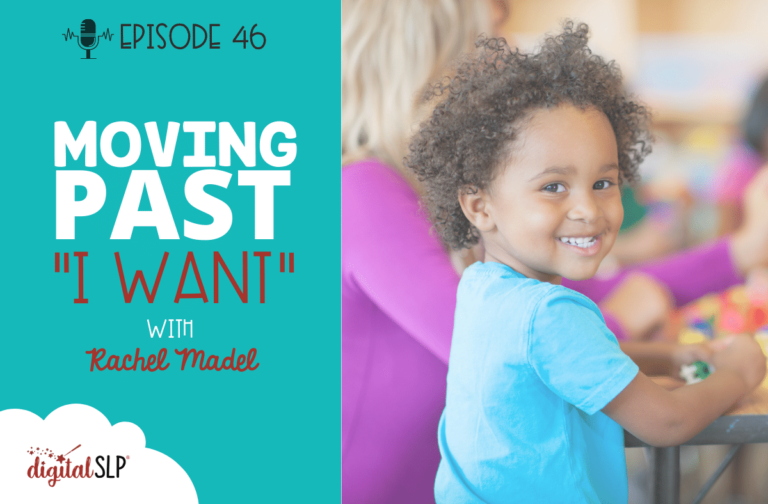



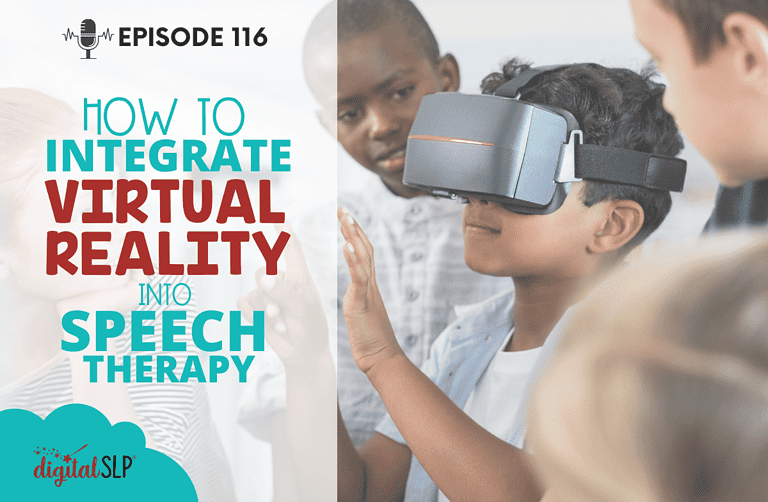
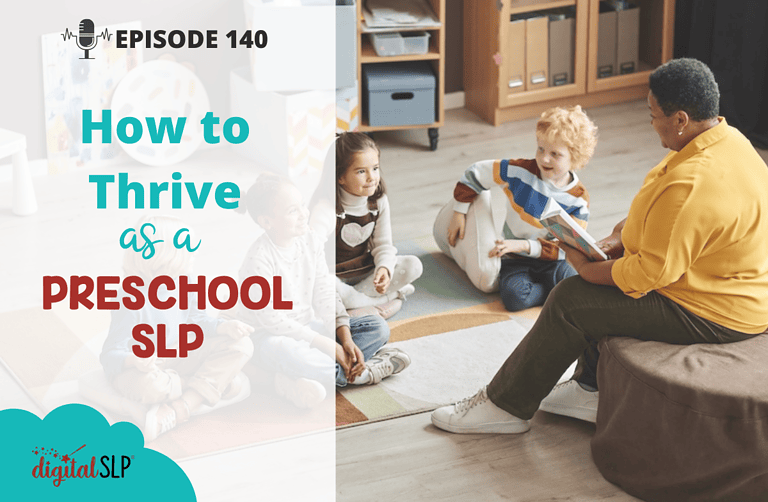
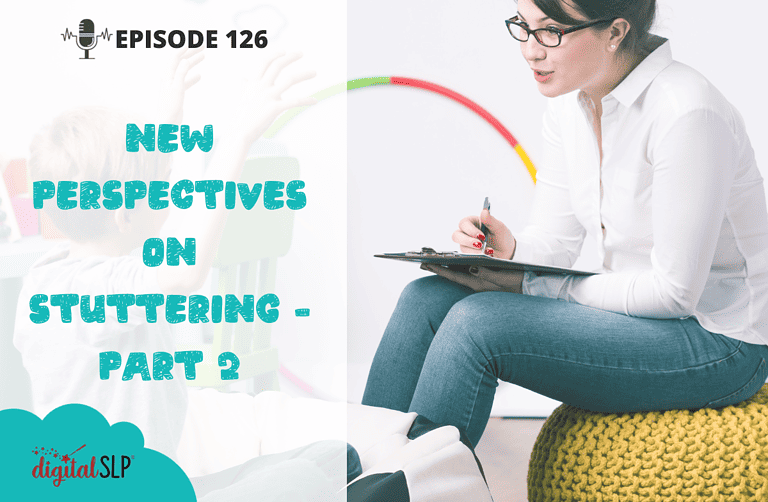
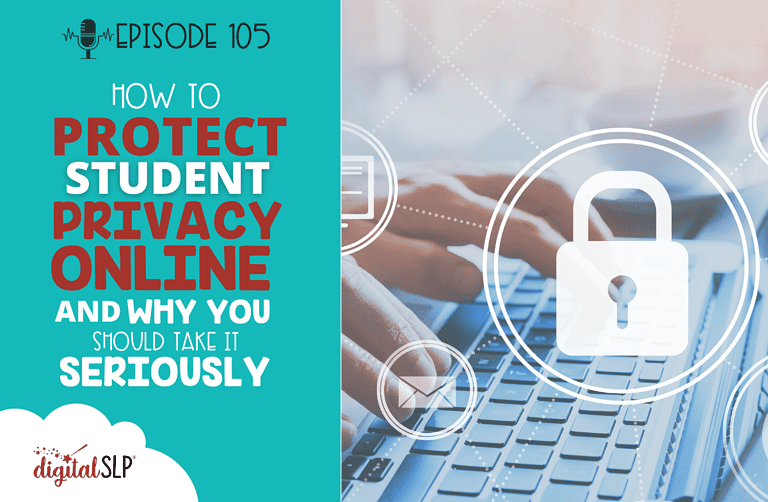
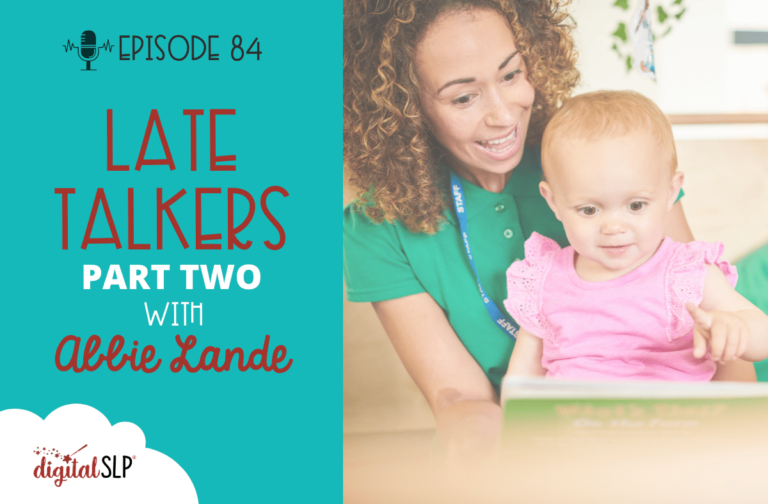
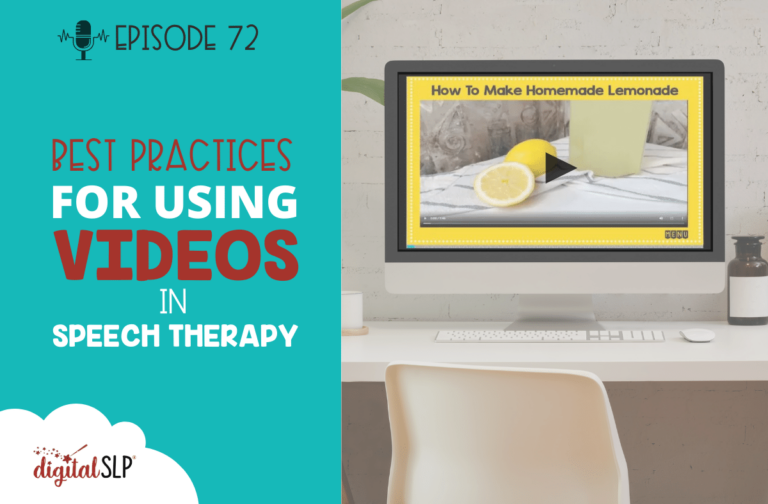

Recent Comments